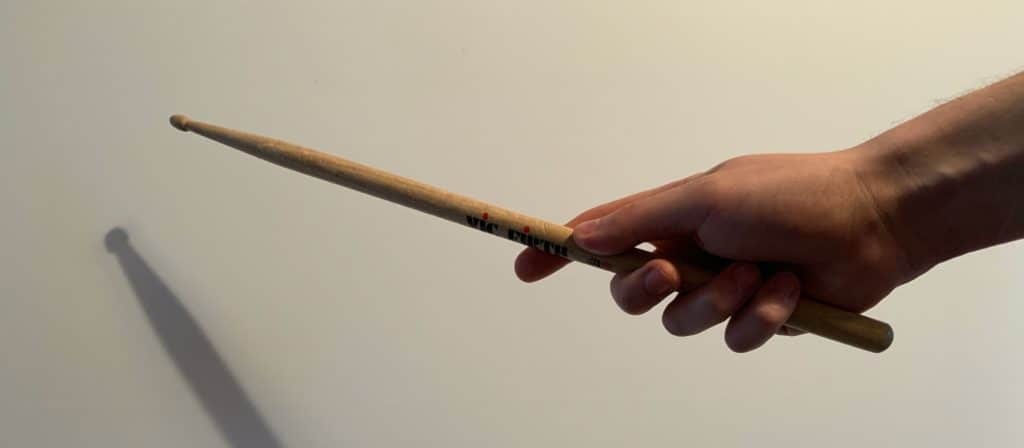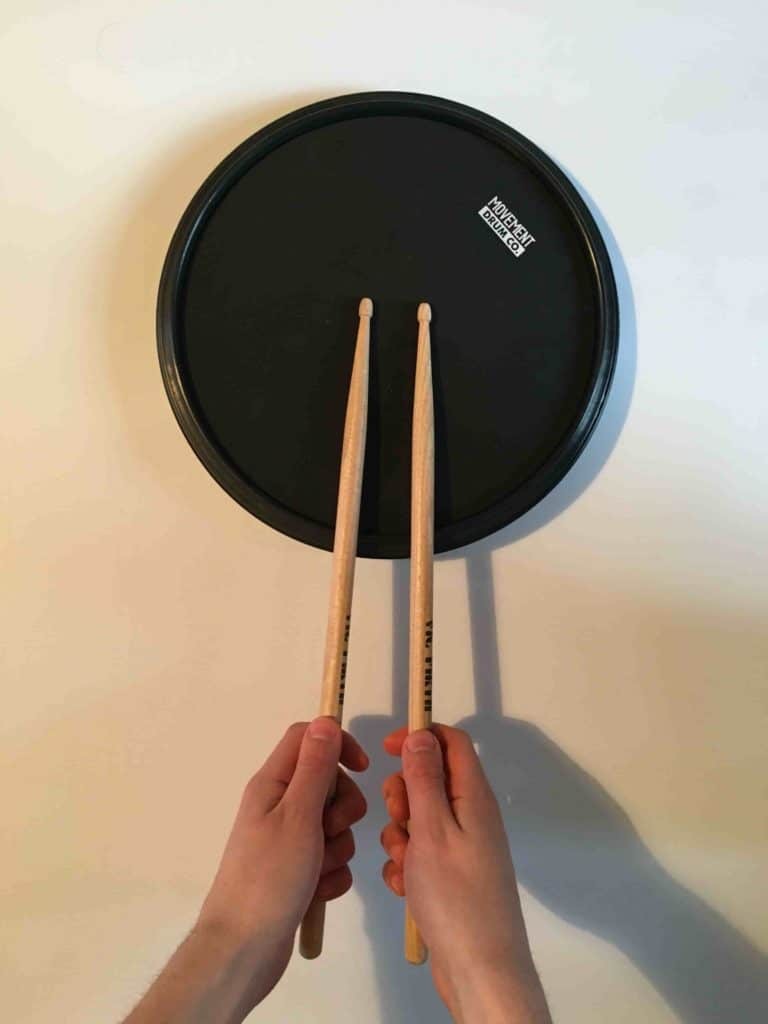Can I Learn To Play Drums On My Own is a question many aspiring musicians ask. At LEARNS.EDU.VN, we understand that learning a new skill, like drumming, can be both exciting and daunting. This guide provides a comprehensive, step-by-step approach to mastering the drums independently, covering everything from fundamental rhythms to advanced techniques. By exploring resources for self-taught drummers, rhythm basics, drumming techniques, practice routines, and essential gear, you’ll discover the path to becoming a proficient drummer.
1. Introduction: Embarking on Your Drumming Journey
Learning to play the drums independently can be an incredibly rewarding experience. With dedication, the right resources, and a structured approach, you can achieve your drumming goals. This guide will help you navigate the challenges and set you on the path to becoming a self-taught drumming expert. Whether you’re a complete beginner or have some musical background, LEARNS.EDU.VN is here to support you with the tools and knowledge you need to succeed.
2. Defining Your Drumming Goals
Before diving into practice, it’s essential to set clear, achievable goals. Are you aiming to play along with your favorite songs, join a band, or simply enjoy a new hobby? Defining your objectives will help you stay motivated and focused throughout your learning process.
2.1 Short-Term Goals
Start with small, manageable steps. For instance:
- Learn basic drum rudiments within the first month.
- Master a simple drum beat in a week.
- Practice for at least 30 minutes each day.
2.2 Long-Term Goals
Think about where you want to be in six months or a year. Consider:
- Playing along with several songs confidently.
- Understanding and applying various drumming techniques.
- Developing your unique drumming style.
Setting these goals will provide a roadmap for your drumming journey and make the learning process more structured and fulfilling.
3. Essential Gear for Self-Taught Drummers
Having the right equipment is crucial for effective practice. While a full drum kit might be ideal, you can start with essential items and gradually expand your setup.
3.1 Drum Kit Options
- Acoustic Drum Set:
- Provides an authentic drumming experience.
- Suitable for experienced players and those serious about learning.
- Can be noisy, requiring soundproofing or a practice space.
- Electronic Drum Set:
- Offers quiet practice with headphone compatibility.
- Includes various drum sounds and customizable kits.
- Ideal for beginners and those with limited space.
- Practice Pad:
- A cost-effective and portable option for practicing rudiments.
- Useful for developing hand technique and coordination.
- Doesn’t replicate the full drumming experience but is great for foundational skills.
3.2 Essential Accessories
| Accessory | Description | Benefit |
|---|---|---|
| Drumsticks | Choose a comfortable weight and size. | Proper grip and control, reducing fatigue. |
| Metronome | Helps maintain consistent tempo. | Improves timing and rhythm accuracy. |
| Drum Throne | Provides comfortable seating. | Maintains good posture and reduces back strain during long practice sessions. |
| Headphones | For quiet practice with electronic kits or playing along with recordings. | Allows focused practice without disturbing others. |
| Learning Resources | Books, online courses, and video tutorials. | Provides structured lessons and guidance, accelerating the learning process. |





4. Mastering the Fundamentals of Drumming
Before attempting complex rhythms and fills, it’s essential to grasp the foundational elements of drumming.
4.1 Posture and Grip
- Posture: Sit upright with your back straight to allow free movement of your arms and legs.
- Grip: Hold the drumsticks loosely, using your fingers and wrists to control the motion. Avoid a tight grip, which can lead to tension and fatigue. There are several grips you can try.
4.2 Types of Drum Grip
The next section is a pretty detailed look at the different drum grips that you can use to play with great technique.
You’re probably going to be exposed to all these drum grips as you learn more and more about drums, so there’s no better time than right now to introduce you to them.
There are a number of different drum grips that professionals use and it’s good to experiment with them and see which you like best.
Don’t feel you have to get bogged down in this section, but simply find one grip you like and take it with you into the next section.
My recommendation would be to start with the Moeller and go from there.
Moeller Grip
This is the grip I use most of the time. It provides great control and is extremely comfortable to use once you get the hang of it.
Getting into this grip:
Imagine that you are holding and swinging a tennis racket.
Now, turn your hand over so that the palm of your hand is facing the floor.
See if you can bounce the stick on your drum pad with a relaxed wrist motion without it falling out of your hand.
Top tips for this grip:
- Make sure you can see a small amount of the butt end (big end) of the stick poking out from underneath the fleshy part of your hand.
- Tuck your fingers neatly into towards the stick. No fingers should stick out.
- Your first finger should slide forward slightly away from the other fingers.
German grip
The German grip is a fundamental grip used by the vast majority of professional drummers. It’s a classic choice favoured by more traditional teachers.
Getting into this grip:
First, let your hand go floppy.
Then simply insert the stick and gently tighten the fingers.
The stick should sit in-between the first joint of the middle finger and the thumb.
Move your hands.
Top tips for this grip:
- Make sure that the tips of your sticks come close together in the centre of the drum or pad.
- The up and down motion of the wrist moves the stick in this grip. Practice this motion and try and relax as much as possible.
- Try and keep the sticks at a 90-degree angle from one another, as shown in the picture above.
French grip
The French grip is favoured by many iconic drummers including Steve Jordan and Jojo Mayer. Your fingers have a larger role in controlling the stick than other grips and for some players this can lead to a greater increase in speed and control.
Getting into this grip:
Starting in the German position, bring your hands together so that your thumbs are facing the ceiling. Looking down, your thumb should be above the first joint of your first finger. This is the ‘fulcrum’ point at which you will be controlling most of the movement of the stick.
There are lots of different ways to move the stick in the french grip.
You can create pressure between your thumb (pushing down) and fingers (pulling up) which will move the stick. The thumb and first finger are the strongest, and typically do most of the work.
You can also use up and down motions of the arm to generate power, and/or you can play with smaller wrist/forearm movements.
These smaller wrist/forearm movements normally have a soft rotation in them: it’s the same movement as when when you turn a key in a lock.
Top tips for this grip:
- Rather than making a V shape like in the German and Moeller grips, the sticks should now be parallel to one another as shown above.
- Experiment with using your other fingers (instead of the first finger) to control the motion of the stick (while still using the thumb on top). You can use them together, or work each finger individually by removing the others from the stick.
- As the wrist is turned sideways and is pointing towards the ceiling, it can be difficult (and painful!) to play with big up and down motions in the wrist. it’s better to use a gentle lock/key rotating motion as described above.
American grip
American grip is a classic ‘middle of the road’ option between German and French grip. It allows you to draw techniques from both German and French styles, making it a great all-round choice.
Getting into this grip:
As it’s such a popular and useful grip, I decided to feature a fantastic video which goes into more depth about what makes the American grip different.
It covers how to get into the grip, how to tell it apart from German and French grip and the various techniques that work well for a player using this style.
Top tips for this grip:
- Use your wrists to generate more power and your fingers to control the stick.
- Your fingers should provide support without stopping the stick from moving.
- Practice moving from German to French grip. Can you see how American grip is a mix of the two?
Traditional grip
Our final grip is the traditional grip.
Any grip where both hands are holding the drum sticks in the same way is known as a matched grip.
The traditional grip is the only grip we’re covering where the hands hold the sticks in different positions.
Joe Morello uses this grip in the video at the start of this section and it’s a must learn if you’re a lover of jazz music.
Only the left hand plays a traditional grip, whereas the right hand remains in a grip of your choice.
This is because traditionally, marching drums would hang down to the right, meaning that a different style of grip was required in order to effectively reach the drum.
Things have moved on since then and we don’t tilt our drums very much anymore. This gives us more flexibility to play with a wider range of grips with both the right and left hands.
While the traditional grip isn’t necessarily technically better than any of the matched grips, drummers still use it for the sake of tradition and playing like the jazz masters of old.
If you want to look like a professional that knows their stuff, you can dazzle your friends with the traditional grip.
Much of my understanding of the traditional grip is as a result of the masterful Jojo Mayer, so I’d just like to give him a little credit here.
As one of the world’s greatest drummers, I’d highly recommend his DVD ‘Secret Weapons For The Modern Drummer‘ to take your technical understanding further.
Getting into this grip:
Turn your hand up so that the thumb is pointing at the ceiling.
Place the stick between your thumb and first finger, with the stick in the soft part in the middle.
Your first two fingers then sit above the stick, with the first finger pointing inwards. Your ring finger sits underneath the stick and provides control.
Top tips for this grip:
- The stick should not be touching the knuckle bone of the index finger (keep it in the soft part between the thumb and index finger).
- Rotate your forearm to move the stick.
- While your thumb will move, try to keep it posting mostly upwards. Avoid facing your palm upwards towards the sky, as you have rotated too far. Only a small rotational movement is required.
4.3 Basic Drum Rudiments
Rudiments are the building blocks of drumming. They help develop your hand coordination, control, and speed. Start with the most fundamental rudiments:
- Single Stroke Roll: Alternating single strokes (R-L-R-L).
- Double Stroke Roll: Two strokes with each hand (RR-LL-RR-LL).
- Paradiddle: A combination of single and double strokes (R-L-RR-L-R-LL).
Practice these rudiments daily, gradually increasing the tempo. Use a metronome to ensure accuracy and consistency.
4.4 Understanding Tempo and Time Signatures
- Tempo: The speed of the music, measured in beats per minute (BPM). Use a metronome to practice playing at different tempos.
- Time Signatures: Indicate the number of beats in a measure and the type of note that receives one beat. Common time signatures include 4/4, 3/4, and 6/8.
Understanding these concepts will help you play in time and interpret drum sheet music effectively.
5. Setting Up a Practice Routine
Consistency is key to improving your drumming skills. Establish a daily practice routine that covers the essential elements of drumming.
5.1 Sample Practice Schedule
| Time | Activity | Focus |
|---|---|---|
| 10 minutes | Warm-up exercises | Stretching, wrist rotations, and light drumming on a practice pad. |
| 20 minutes | Rudiment practice | Single stroke roll, double stroke roll, paradiddle. Focus on consistency and speed. |
| 30 minutes | Drum beat practice | Playing along with backing tracks or songs. |
| 10 minutes | Drum fills and improvisation | Experimenting with new fills and creating your own variations. |
| 5 minutes | Cool-down exercises | Slow drumming, stretching. |
5.2 Tips for Effective Practice
- Set Realistic Goals: Don’t try to learn too much too quickly.
- Stay Focused: Minimize distractions and concentrate on the task at hand.
- Record Your Progress: Use a video or audio recorder to track your improvement and identify areas for improvement.
- Take Breaks: Avoid burnout by taking short breaks during long practice sessions.
- Stay Inspired: Listen to your favorite drummers and explore new music to keep your motivation high.
6. Learning Drum Beats and Grooves
Once you have a solid foundation in rudiments and technique, you can start learning various drum beats and grooves.
6.1 Common Drum Beats
- Rock Beat: Bass drum on beats 1 and 3, snare drum on beats 2 and 4, hi-hat on every beat.
- Funk Beat: Syncopated rhythms with ghost notes and open hi-hats.
- Latin Beat: Clave-based rhythms with intricate percussion patterns.
- Jazz Beat: Swing rhythms with ride cymbal patterns and snare drum comping.
6.2 Playing Along with Songs
One of the most effective ways to learn drum beats is by playing along with your favorite songs. Start with simple songs and gradually move to more complex ones. Pay attention to the drummer’s technique and try to replicate their style.
6.3 Drum Notation and Tabs
Understanding drum notation and tablature can help you learn new beats and fills more efficiently.
- Drum Notation: Uses standard musical notation to indicate which drums and cymbals to play.
- Drum Tabs: A simplified notation system that uses letters and symbols to represent the drum parts.
LEARNS.EDU.VN offers comprehensive guides on drum notation and tablature to help you decode and play various drum patterns.
7. Exploring Drum Fills and Improvisation
Drum fills add excitement and variety to your playing. They are short rhythmic patterns that transition between different sections of a song.
7.1 Basic Drum Fills
Start with simple fills that use the rudiments you’ve already learned. For example:
- Single stroke roll across the toms.
- Paradiddle between the snare drum and toms.
7.2 Improvisation Techniques
- Listen Actively: Pay attention to the music and respond with your fills.
- Use Dynamics: Vary the volume and intensity of your fills to create contrast.
- Experiment with Rhythms: Try different combinations of notes and rests to create unique patterns.
By experimenting and exploring, you can develop your unique drumming voice and add your personal touch to the music.
8. Advanced Drumming Techniques
As you progress, you can explore more advanced techniques to enhance your skills.
8.1 Double Bass Drumming
Involves using two bass drums or a double pedal to create fast and complex rhythms. This technique is common in metal and hard rock genres.
8.2 Odd Time Signatures
Playing in odd time signatures (e.g., 5/4, 7/8) requires a strong understanding of rhythm and counting. Practice playing along with songs in these time signatures to develop your skills.
8.3 полиритмияs and полиметрияs
полиритмияs involve playing two or more different rhythms simultaneously. полиметрияs involve layering different time signatures on top of each other. These techniques can add complexity and interest to your drumming.
9. Resources for Self-Taught Drummers
Numerous resources are available to support your drumming journey.
9.1 Online Courses and Tutorials
LEARNS.EDU.VN offers a variety of online courses and tutorials covering all aspects of drumming, from beginner to advanced levels. These resources provide structured lessons and personalized feedback to help you improve.
9.2 Books and Instructional Materials
| Book Title | Author | Description |
|---|---|---|
| “The Drummer’s Complete Vocabulary” | John Ramsay | A comprehensive guide to drum rudiments and techniques. |
| “Stick Control for the Snare Drummer” | George Lawrence Stone | A classic book for developing hand technique and control. |
| “Advanced Techniques for the Modern Drummer” | Jim Chapin | An in-depth exploration of advanced drumming techniques and concepts. |
9.3 Drumming Communities and Forums
Joining drumming communities and forums can provide valuable support and inspiration. Share your progress, ask questions, and connect with other drummers from around the world.
10. Maintaining Motivation and Avoiding Burnout
Learning to play drums can be challenging, and it’s important to stay motivated and avoid burnout.
10.1 Set Realistic Expectations
Understand that progress takes time and effort. Don’t get discouraged if you don’t see results immediately.
10.2 Celebrate Your Achievements
Acknowledge and celebrate your accomplishments, no matter how small. This will help you stay motivated and focused on your goals.
10.3 Find a Drumming Buddy
Practicing with a friend can make the learning process more enjoyable and help you stay accountable.
10.4 Vary Your Practice Routine
Avoid monotony by changing up your practice routine and exploring different styles of music.
10.5 Listen to Your Body
Take breaks when you feel tired or sore. Overexertion can lead to injuries and setbacks.
11. The Role of LEARNS.EDU.VN in Your Drumming Education
At LEARNS.EDU.VN, we are committed to providing you with the highest quality educational resources to support your drumming journey. Our platform offers:
- Comprehensive Courses: Structured lessons covering all aspects of drumming.
- Expert Instructors: Guidance from experienced drummers and educators.
- Personalized Feedback: Tailored advice to help you improve your skills.
- Supportive Community: A network of fellow learners to share your progress and ask questions.
We believe that everyone can learn to play the drums with the right guidance and resources. Let LEARNS.EDU.VN be your partner in achieving your drumming goals.
12. Conclusion: Unleash Your Inner Drummer
Learning to play the drums on your own is a challenging but incredibly rewarding experience. By setting clear goals, mastering the fundamentals, establishing a consistent practice routine, and utilizing the resources available at LEARNS.EDU.VN, you can unlock your drumming potential and unleash your inner musician.
Remember, the journey of a thousand miles begins with a single step. Start practicing today, and you’ll be amazed at how far you can go.
Ready to start your drumming journey? Visit LEARNS.EDU.VN today to explore our comprehensive courses and resources. For more information, contact us at 123 Education Way, Learnville, CA 90210, United States, or Whatsapp: +1 555-555-1212.
FAQ: Common Questions About Learning Drums
-
Is it possible to learn drums on my own?
Yes, with dedication, the right resources, and a structured approach, you can learn to play drums independently.
-
What equipment do I need to start learning drums?
You can start with a practice pad, drumsticks, and a metronome. As you progress, you may want to invest in a drum kit (acoustic or electronic).
-
How often should I practice drums?
Aim for at least 30 minutes of practice each day to see consistent improvement.
-
What are the basic drum rudiments I should learn?
Start with the single stroke roll, double stroke roll, and paradiddle.
-
How can I improve my timing and rhythm?
Use a metronome to practice playing at different tempos and focus on maintaining a consistent beat.
-
What should I do if I feel discouraged or unmotivated?
Set realistic goals, celebrate your achievements, find a drumming buddy, and vary your practice routine.
-
Are online drum lessons effective?
Yes, online drum lessons can be very effective, especially when they provide structured lessons and personalized feedback.
-
How long does it take to become a proficient drummer?
Proficiency varies from person to person, but with consistent practice, you can achieve a good level of skill within a year or two.
-
Should I learn to read drum notation?
Learning to read drum notation can help you learn new beats and fills more efficiently.
-
Where can I find resources for self-taught drummers?
learns.edu.vn offers comprehensive courses, tutorials, and community support for self-taught drummers.
